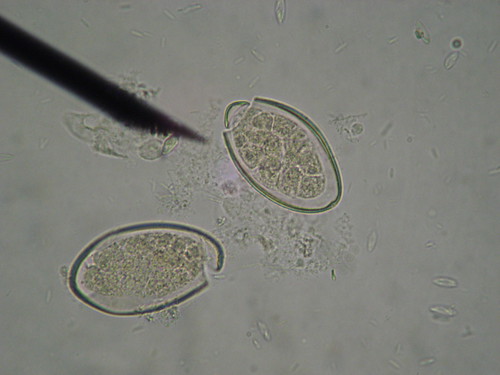
Diphyllobothrium latum
Physiology and Structure:
It is one of the largest tapeworms which can measure up to 20 to 30 feet long. It has a complex life cycle that involves two immediate hosts: freshwater crustaceans and freshwater fish.
The ribbon-like larval worm in the flesh of freshwater fish is called sparganum. Ingestion of this sparhanum in raw or insufficient cooked fish initiates infection. The scolex(head) is shaped like a lance and has long, lateral grooves (bothria) that serves as attachment.
 Diphyllobothrium latum
Diphyllobothrium latum
https://www.flickr.com/photos/25196375@N08/2371534286/
This is the egg of D. Latum which is different from other tapeworm’s egg. The adult worms may take months or even years to produce millions of egg.
Clinical Syndromes:
Treatment, Prevention and Control:
Vitamin B12 supplementation might be necessary in people with evidence of clinical vitamin B12 deficiency. Refrain thorough cooked fish, proper treatment and disposal of human feces and immediate treatment of infections to reduce the prevalence of this infection.